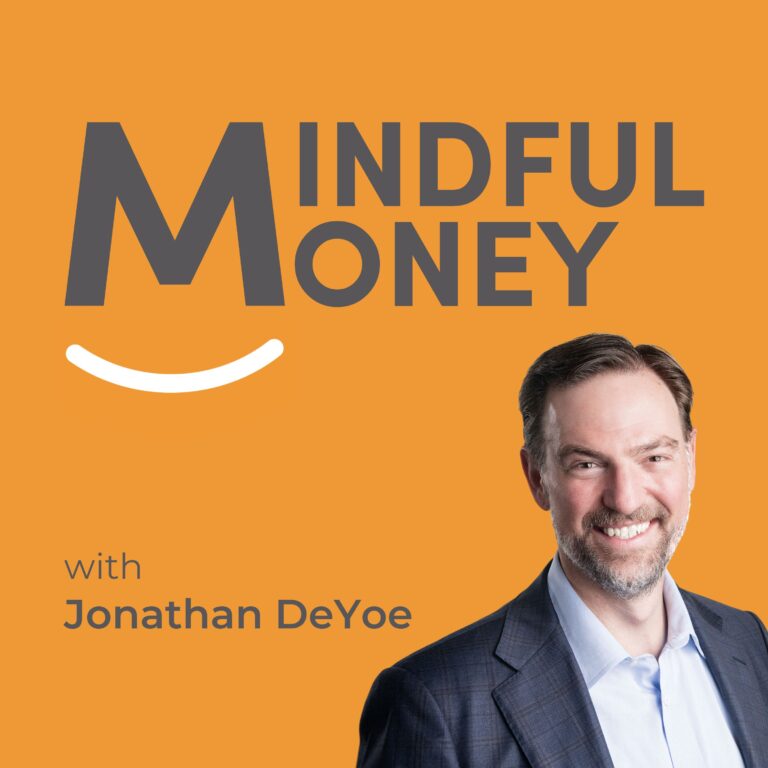From last week’s Mindful Money Weekly, you remember that there are three measurable and controllable percentages that are absolutely critical to your long-term investment success. These are the three financial levers each of us can pull to alter our long-term financial outcomes for better or worse:
- Savings Rate: The percentage of your income you save.
- Equity Allocation: The percentage of your portfolio you place in equities
- Withdrawal Rate: The percentage of your portfolio you withdraw
When you’re looking at your personal finances, your equity allocation is the second of the dominant variables you need to get right.
LET THE COMPOUNDING BEGIN
Equities (also known as “stocks”) represent the ownership of businesses. No one can be a successful lifetime equity investor without seeing that mainstream businesses are generally rational, fundamentally profit-seeking, and run by highly compensated professional management for the explicit benefit of shareholders.
Management’s primary responsibility is to enhance shareholder value over time.
Management may choose or, reasonably, be required to consider other stakeholders and embrace other values. Other stakeholders and values will always be second to management’s primary function – to benefit shareholders. If investors cannot reap the benefits of their investments, they will no longer invest. If investors don’t invest, then none of the other values or benefits to other stakeholders can be pursued.
Management works hard to accomplish their difficult task by harnessing innovation and enhancing productivity to satisfy the needs and wants of Earth’s entire population – approaching 8 billion people.
Equities (ownership in great businesses) are the only investable asset class that employs human ingenuity to fulfill the vast array of human wants and needs. As each of us awakens every day to make economic decisions – what things to buy, which services to use, what work to do, and which investments to pursue – business hopes to fulfill those wants and needs.
It doesn’t take too deep a dive into history to see the inevitability of the business function.
The result? For nearly a century, these businesses have provided compound returns exceeding 3 times the average rate of inflation. As such, they are the greatest protector and generator of real (net of inflation) wealth that we as investors can access.
More easily than ever in history, we are able to own globally diversified baskets of these great businesses for almost no cost. Every investor can choose whether to passively own global indices for next to nothing or to pay a little more to engage in active management in the attempt to “outperform” those indices. You can read my thoughts on this discussion HERE and HERE.
Regardless of HOW you invest in equity markets, their long-term real returns have been more than twice that of the bonds from the same businesses which is more than twice the return of holding FDIC insured cash or short-term treasuries.
In other words, owning bits of businesses provides a substantially greater return than does lending to them or holding cash assets. We call this the Equity-Risk Premium. The equity premium is the way an efficient market prices the time unpredictability of equity returns – that is, their volatility. We know THAT equities outperform in the long run. We don’t know WHEN equities will outperform in the short run.
Volatility dissipates over time, while the premium return remains. Said another way, the investor focused on owning bonds and cash gives up more than half the permanent real return of equities in exchange for the avoidance of temporary declines.
Is this a rational decision?
Equity investors pay a price for the long-term equity risk premium. That price is the short-term volatility of their holdings. It is by enduring the short-term unknowns that we earn the long-term premium returns.
“Jonathan, I have an idea. How about we buy low and sell high!?!?”
It is a great idea that hinges upon our ability to know when it is low and when it is high and our overcoming the enormous physiological and psychological barriers to this ability.
Our brains (the hardware) and our psychology (the software) are both adapted to avoid “bad” and chase “good.” In a normal economic decision, when the thing we want goes down in price we buy more and when it goes up in price we buy less. That is NOT how it works with investments because our primitive brains experience normal volatility counter-cyclically. The best time to invest looks and feels like the worst time and the worst time looks and feels like the best. This is why NO ONE has been able to predictably and consistently get in at a relative bottom and get out at a relative top.
The only way to capture the full premium return of equities is to patiently hold them through every experience of decline.
Volatility and return are two sides of the same equity investing coin. On one side we have premium volatility. On the other we have premium return. You cannot enjoy one without experiencing the other.
The problem the retirement income investor (most of us) faces is a very simple one – we work a limited number of years to fund a retirement of indeterminate length in a rising cost world. The answer to the problem is long-term compounding. The tool that does the best job of this is equities.
If the long term real (after inflation) return of equities is 7% (which it roughly is) and the long-term real return of bonds is 3% (which it roughly is) and the long-term real return of cash is <1% (which it is), then the investor is going to want more of their assets compounding at 7% than at 3% or <1%.
This is why your equity allocation is so incredibly important (one of the 3 most important) numbers to keep in mind. The percentage of your portfolio that you commit – now and forever – to owning the great companies of the US and the world (through globally diverse portfolios of equities) is a dominant variable in your long-term success.
From a long-term retirement income portfolio perspective this is a one-decision decision. The higher the percentage of your overall portfolio you commit to owning businesses for the long haul, the higher the probability (approaching certainty over time – though never certain) that your portfolio will be able to produce an income stream to match your rising costs of living and last the rest of your life.
The flip side is also true. The lower the percentage of your overall portfolio you commit to owning businesses for the long haul, the lower the probability that your portfolio will produce an income stream that rises to match your rising costs of living for the rest of your life.
Nothing is guaranteed (this is investing). Given the choice, I choose and recommend higher probability outcomes over lower probability outcomes.
I choose equities.





